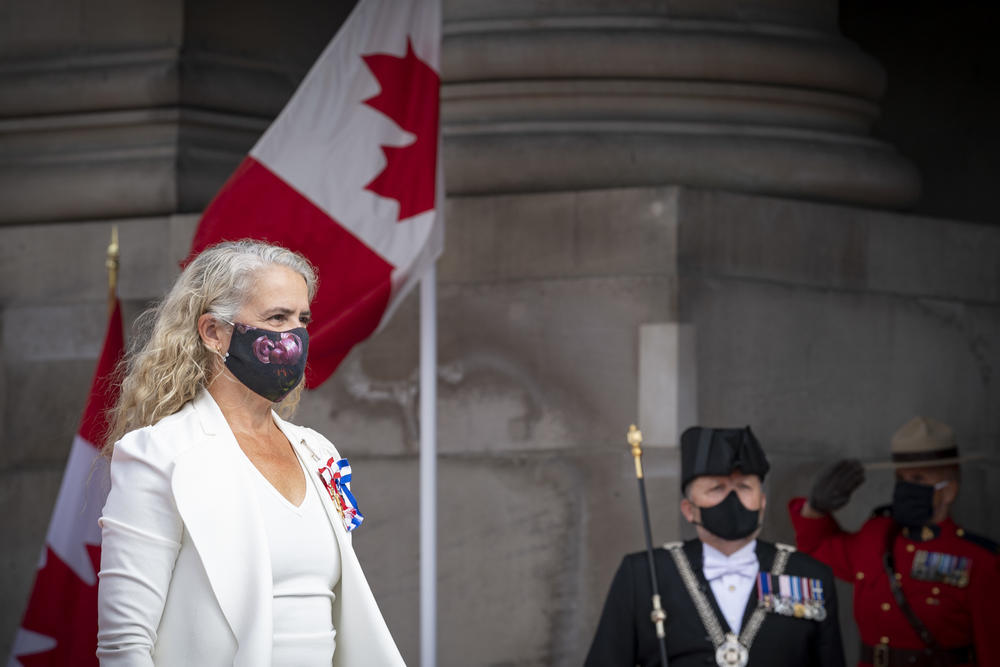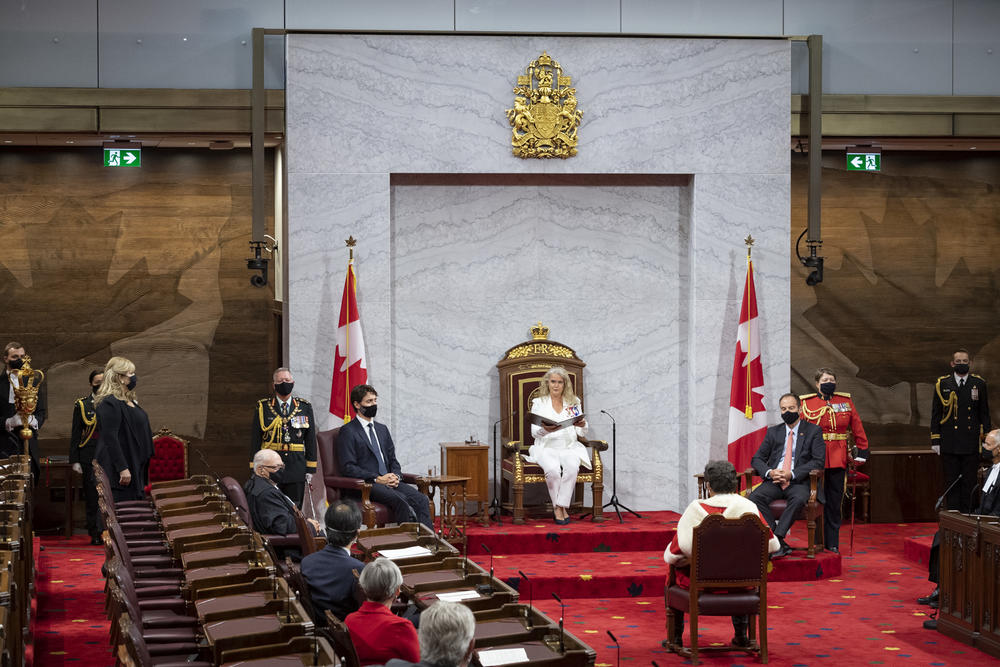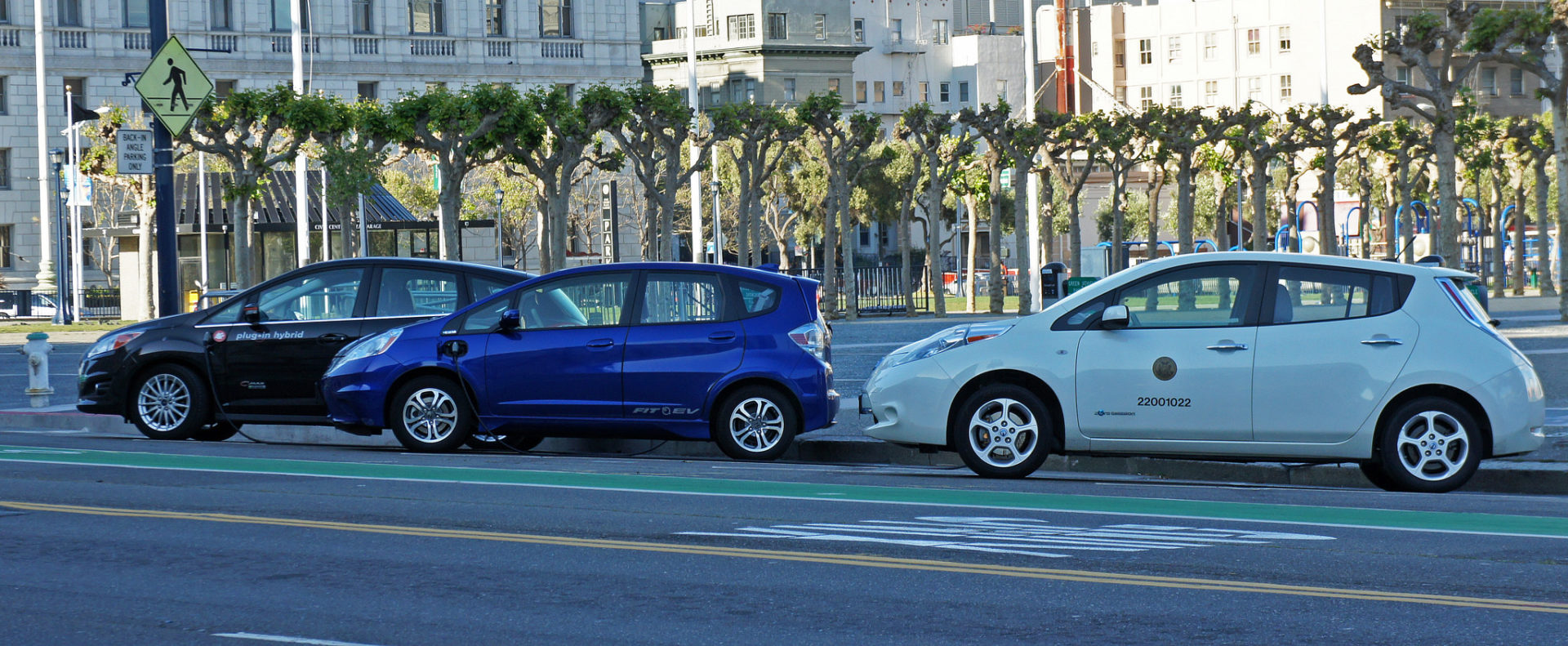
Celebrating 7 years of The Narwhal — and gearing up for the next 7
Between a fresh take on engagement and our new life on video, our team is...
In a speech from the throne that largely focused on plans to steer Canada through the COVID-19 pandemic’s immediate health and economic crises, the federal government said climate action will be an essential part of efforts to create new jobs and stimulate an economic recovery.
The speech, delivered on Wednesday by Governor General Julie Payette, opened a new session of Parliament and laid out the government’s priorities as Canada faces rising COVID-19 cases, double-digit unemployment and the ever-pressing challenge of reducing greenhouse gas emissions.
“Climate action will be a cornerstone of our plan to support and create a million jobs across the country,” the speech said.
“This is where the world is going. Global consumers and investors are demanding and rewarding climate action.”

Governor General Julie Payette arrives at the the Senate, before delivering the speech from the throne. Photo: Sergeant Johanie Maheu / Rideau Hall
The new and renewed commitments to climate action were welcomed by environmental organizations.
“[They] acknowledged that this is where the world’s economies are going and that Canada needs to get in the game and stay in the game of producing low carbon and clean energy and clean technology solutions,” Clean Energy Canada executive director Merran Smith said.
Smith said there were great signals in the throne speech and she will be watching to see how the government puts its commitments into action.
“The rubber hits the road when we see the budget update and when we see the climate plan,” she said.
The government promised a fiscal update this fall. Until then, here are some highlights from the Trudeau government’s throne speech commitments.
The federal government reiterated its commitment to exceed Canada’s 2030 climate targets, promising to “immediately” bring forward a plan. The government also promised to legislate its goal of net-zero emissions by 2050 and to continue pricing carbon pollution.
Canadians “know climate change threatens our health, way of life and planet. They want climate action now, and that is what the government will continue to deliver,” the speech said.
Under the Paris Agreement, the federal government committed to reduce greenhouse gas emissions by 30 per cent below 2005 levels by 2030.
Projections released in December 2019 show Canada will miss its emissions target by 77 million tonnes — roughly the annual emissions of 16.6 million cars — based on existing measures or those under development.
Isabelle Turcotte, director of federal policy at the Pembina Institute, praised the government for amping up its climate commitments.
“The most exciting and, I think, concrete example of that is that they have a new plan to meet and exceed the 2030 target, and we’re really looking forward to seeing it,” she said.
“We’re excited to see them reiterate that they’re going to create an accountability mechanism to make sure that Canada stops missing its climate targets,” she added.
The government reiterated a commitment to support investments in renewable energy and to move forward with the Clean Power Fund — a $5 billion fund to support electrification of industry — that the Liberals committed to in their election platform.
The speech also promised investments in transit, charging stations for electric cars and to make zero-emissions vehicles more affordable.
“No one was expecting a lot of details in the speech in terms of funding envelopes, specific programs, or details in terms of how we will achieve or move on these really key objects,” Turcotte said.
“But the direction, the tone and the vision is that climate action is really a cornerstone of rebuilding a stronger economy and that’s really key.”

The Governor General Julie Payette delivers the speech from the throne, which introduces the government’s direction and goals, and outlines how it will work to achieve them. Photo: Sergeant Johanie Maheu / Rideau Hall
Unemployment in Canada has been in the double-digits for much of this year. The number of people who don’t have enough work is substantially higher than it was before the pandemic.
“Women, racialized Canadians and young people have borne the brunt of job losses,” the speech said.
The government promised to do “whatever it takes” to support people and businesses through the economic crisis, pledging to create more than one million new jobs in an effort to restore employment to pre-pandemic levels.
“This throne speech recognized that tackling coronavirus inequality and climate inequality go hand-in-hand,” Jesse Firempong, a climate justice spokesperson for Greenpeace Canada, said in a statement.
“To turn this into real change for impacted communities — including to ensure they benefit from the green jobs promised today — we need to see fully funded plans in the upcoming ministerial mandate letters and economic update,” Firempong said.
“The women, Indigenous Peoples and racialized and low-income communities on the frontlines of both crises should be front and centre in an equitable, feminist, green recovery.”
In the speech, the government pledged to create thousands of jobs in energy efficiency building retrofits.
It also committed to launching a new fund to attract investments in the manufacturing of zero-emissions products and to cut the corporate tax rate in half for green manufacturing companies.
“A good example of adapting to a carbon-neutral future is building zero-emissions vehicles and batteries,” the speech said.
“Canada has the resources — from nickel to copper — needed for these clean technologies. This — combined with Canadian expertise — is Canada’s competitive edge.”
Mining for copper isn’t without controversy in Canada, especially after a tailings dam burst in 2014 at the Mount Polley copper and gold mine, which sent 25 billion litres of contaminated materials into B.C. lakes and rivers.

The speech from the throne promised charging stations for electric cars and to make zero-emissions vehicles more affordable. The speech also indicated Canada could play a role in building zero-emissions vehicles and batteries. Photo: mariordo59 / Flickr
Vince Gasparro, managing director of corporate development and clean energy finance at Vancity Community Investment Bank, called the government’s decision to cut the corporate tax in half for green companies a “big, big win.”
“It improves the profitability of these companies and allows them to expand their businesses…and it helps attract capital,” he said.
“The ability to attract private capital into the renewable energy market … was always a critical component,” he said, noting the federal government won’t be able to meet goals such as becoming carbon neutral by 2050 without the private sector’s help.
The speech said the pandemic has reminded Canadians of the importance of nature.
“The government will work with municipalities as part of a new commitment to expand urban parks, so that everyone has access to green space,” it said.
The government reiterated its promise to protect 25 per cent of Canada’s land and oceans in five years and to use “nature-based solutions to fight climate change.”
The speech included commitments to invest in measures to reduce the impact of floods, wildfires, and other climate related disasters.
The speech also committed to modernizing the Canadian Environmental Protection Act (CEPA), a move welcomed by Ecojustice executive director Devon Page, who noted in a statement that the legislation hasn’t been updated for two decades.
The act “is no longer up to the task of protecting Canadians, especially those in vulnerable situations, from toxic substances and pollution,” he said.
“Crucially, a modernized CEPA must include the right to a healthy environment.”
Page pointed to a September report from the UN Special Rapporteur on hazardous substances and wastes that highlights Canada’s ongoing failure to protect Indigenous and racialized communities — the same communities most impacted by COVID-19 — from the worst effects of rising greenhouse gas emissions.
“The report explicitly calls for Canada to legislate the right to a healthy environment,” Page said.
Get the inside scoop on The Narwhal’s environment and climate reporting by signing up for our free newsletter. On a warm September evening nearly 15...
Continue reading
Between a fresh take on engagement and our new life on video, our team is...

The public has a few days left to comment on Doug Ford’s omnibus development bill....

115 billion litres, 70 years to fix, $5.5 billion in lawsuits
